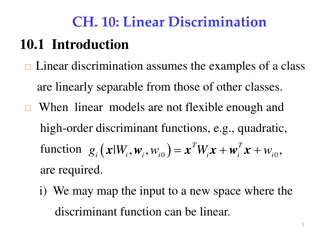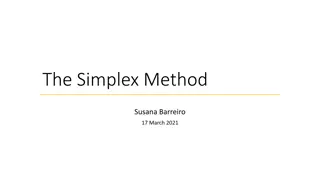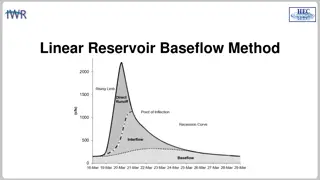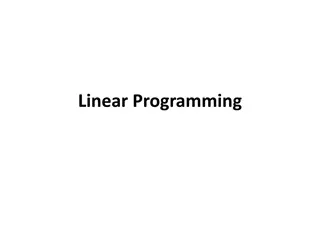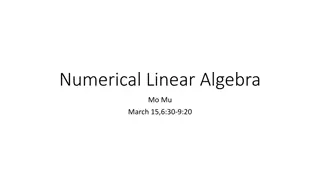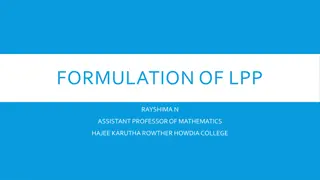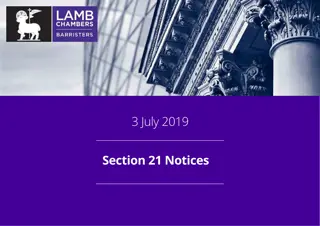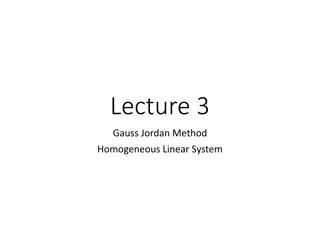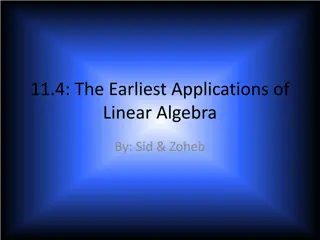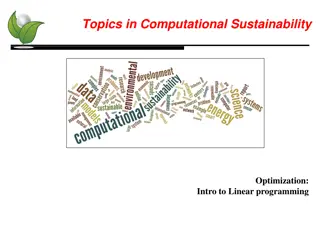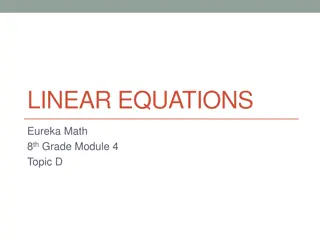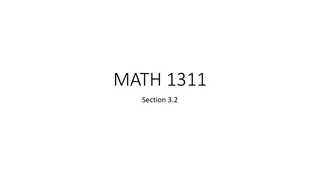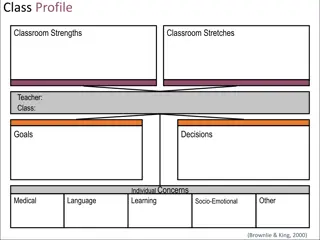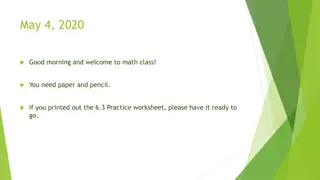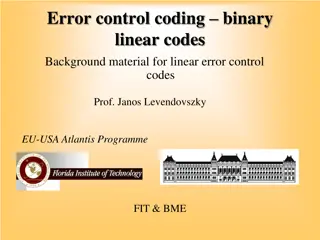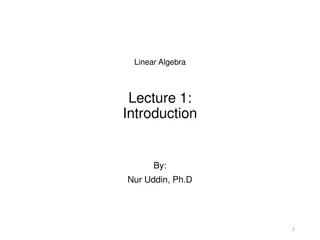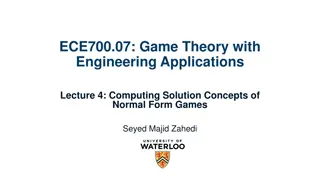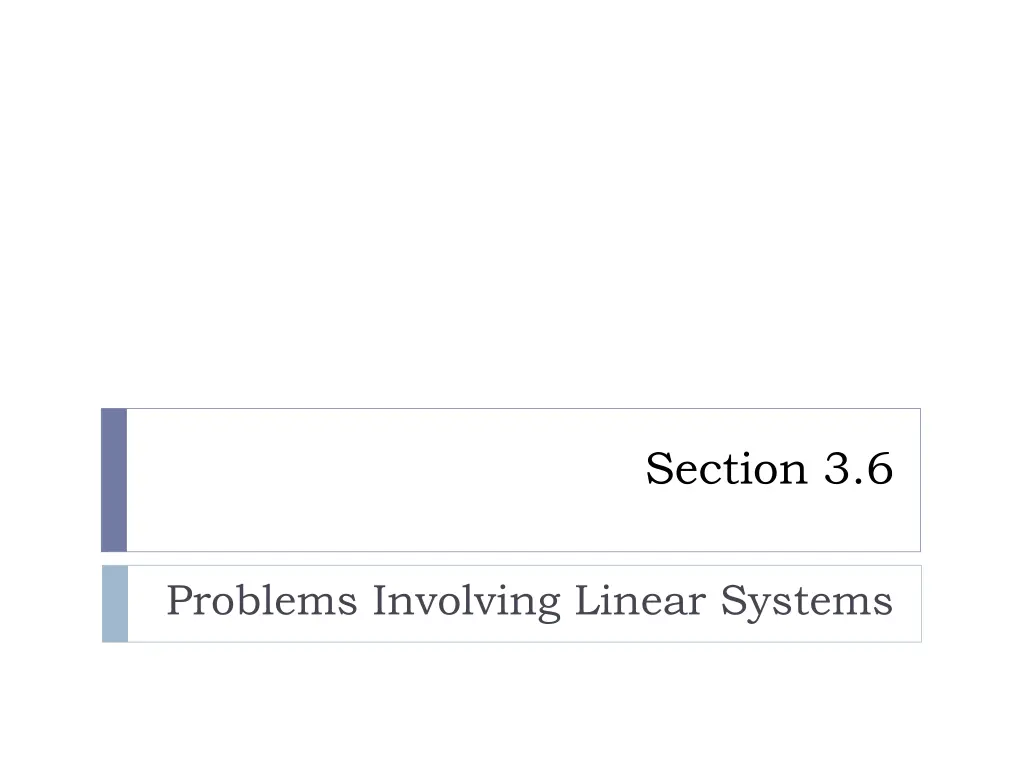
Linear Systems Problem-solving Techniques
Learn how to determine the number of solutions in linear systems, identify solutions using standard form coefficients, and solve problems involving linear equations with step-by-step methods. Improve your understanding of linear systems with practical examples and explanations.
Download Presentation

Please find below an Image/Link to download the presentation.
The content on the website is provided AS IS for your information and personal use only. It may not be sold, licensed, or shared on other websites without obtaining consent from the author. If you encounter any issues during the download, it is possible that the publisher has removed the file from their server.
You are allowed to download the files provided on this website for personal or commercial use, subject to the condition that they are used lawfully. All files are the property of their respective owners.
The content on the website is provided AS IS for your information and personal use only. It may not be sold, licensed, or shared on other websites without obtaining consent from the author.
E N D
Presentation Transcript
Section 3.6 Problems Involving Linear Systems
I) Number of Solutions: y 4 1. NO SOLUTIONS (System is Inconsistent) 2 x Lines are parallel and do not intersect each other Lines have the same slope but different y-intercept -4 -3 -2 -1 0 1 2 3 4 -2 -4 y 2. ONE SOLUTION (System is Consistent) 4 Lines intersect at ONE point 2 Lines have Different slopes x -4 -3 -2 -1 0 1 2 3 4 y (System is Consistent) 3. INFINITE SOLUTIONS 4 Lines OVERLAP each other 2 Lines have both the SAME slope and Y-intersect x -4 -3 -2 -1 0 1 2 3 4
Ex: Indicate how many solutions are in each system = = + + 5 5 y y x x 3 2 1 2 One Intersection Slopes are different = = + 3 5 y y 2 x Slopes are the same Y-intercepts are different No Intersections 3 4 x 6 = = + 5 6 y y x Slopes are the same Y-intercepts are the same Infinite Solutions = + + 10 x 12 2 10 12 x 2 2
+ = Ax By C II) Number of Solutions in Standard Form: A Linear System with INFINITE Solutions will have all 3 coefficients A,B,C in ratio with the same constant 3 2 6 x y = 4 4 4 4 times bigger All corresponding coefficients are in ratio and = 12 8 24 x y Same Slopes and Same Y-intercept A Linear System with NO Solutions will only have coefficients A & B in ratio with the same constant and NOT C 3 2 6 x y = 3 4 4 Same Slopes but Different Y-intercepts Only coefficients A & B are in ratio and not C = 12 8 18 x y A Linear System with ONE Solution will have different ratios for coefficients A & B. C doesn t matter.
Ex: Indicate the Number of Solutions in each Linear System: = 3 5 4 x y ( + = 2 6 11 x y ( ) 2 ) 3 2 3 ( ) 2 + = + = 4 12 22 x y 9 15 12 x y Coefficients A & B - NOT in ratio One Solutions All coefficients A,B,C are in ratio Infinite Solutions = 6 3 12 x y 3 4 = 3 8 10 x y 3 ( ) 3 4 1 2 4 ? = 9 x y 9 2 9 4 + = 1.5 5 5 x y Coefficients A & B are NOT in ratio One Solutions A & B are in ratio, but not C NO Solutions
III) Solving Problems Involving Linear Systems In the next part, you will have scenarios that involves problems with linear equations First step: Indicate What the Variables are Number of People Cost for a certain item 2nd Step: Read the Question to generate your 2 equations Revenue Interest Earned: I PRT = = P Q R = Price Quantity Revenue : : : : I Interest Earned P Principle R Interest Rate Decimal Form ( # T Time of Years ( ) $ at Beginning ( ) ) 3rd Step: Solve the system by Elimination or Substitution 4th Step: Write your concluding statement
Ex: A tutoring center charges an annual fee and an hourly fee. 8 hours of tutoring cost $290. 15 hours cost $500. Find the annual cost and hourly cost. Let x be the Annual Cost Let y be the Hourly Cost = 1st: Indicate the Variables 2nd: Make the Equations + Cost Annual Fee Hourly Fees Solve by Elimination + + = 8 $290 = = $30 y = ) 30 = x = x y 15 $500 x y $210 0 7y The Hourly cost is $30 per hour The Annual cost is $50 per year ( x+ 8 $290 $50
Practice: The cost for a school play is $35 per adult and $20 per student. 160 people attended the play and total revenue was $4100. How many students and adults attended? Let x be the Number of Adults Let y be the Number of Students 160 x y + = 35 20 4100 x y + = ( Revenue: Total 1st: Indicate the Variables 2nd: Make the Equations ( ) Total people Quantity ) = P Q R Revenue 3rd: Solve by Elimination 5600 4100 1500 = 100 y = 60 x = + + + = = + x = 35 35 35 20 15y x x y y ( ) 160 20 y x y + 3 = 35 4100 0 100 students and 60 parents attended the school play
Ex: James invested $9000, part with Bank A (3%) and part with Bank B (5%). After one year, he made a total of $340 in interest. How much did he invest with each bank? Indicate the Variables Let A be amount invested in Bank A $340 70 = 3500 B = 5500 A= Total Investment $9000 $9000 B = 0.03 0.05 A + ( ) + + = = + 0.03 0.03 0.03 0.03 0.05 0.02B $270 A A B B A = $340 B Amount $A Bank A (3%) ( )( A = 0.03 = Amount $B Bank B (5%) ( )( B = 0.05 I = 0 Let B be amount invested in Bank B James invested $5500 with Bank A and $3500 with Bank B ) ) 0.03 1 I 0.05 1 I Make the Equations A B + 0.05 A B + I A B = = $9000 $340 0.03 Solve by Elimination
Ex: James invested $10000, part with Bank A (7%) and part with Bank B (13%). After one year, both banks made the same amount of Interest. How much did he invest with each bank? $10000 A B + = 0.07 0.13 A B = ( ) 10000 0.07 0.13 B B = 700 0.07 0.13 B B = 700 0.20B = 3500 B = 6500 A = These are the interests he earned from each bank = $10000 A B Indicate the Variables Let A be amount invested in Bank A Total Investment $10000 Amount $A Bank A (7%) ( )( A = 0.07 = Amount $B Bank B (13%) ( )( B = 0.13 I = Let B be amount invested in Bank B ) ) 0.07 1 I 0.13 1 B I Make the Equations A B + = 0.07 A = Solve by Substitution I A $10000 0.13 B James invested $3500 with Bank A and $6500 with Bank B
Challenge: A musical charges $4.00 for adults and $2.50 for children. On the first night, the ratio of adults to kids was 3:5. On the second night, the ratio was 2:3. A total of 1390 people attended for two nights, and the revenue generated was $4285. How many adults and kids attended in each night? Total Kids $2.50 Adults $4.00 Attendance 8x 3x 5x 1st Night 2y 2nd Night 5y 3y 2.5 x(5x+3y) Revenue 4 x (3x+2y)
Challenge: A musical charges $4.00 for adults and $2.50 for children. On the first night, the ratio of adults to kids was 3:5. On the second night, the ratio was 2:3. A total of 1390 people attended for two nights, and the revenue generated was $4285. How many adults and kids attended? Make the Equations Quantity Revenue + + = ) 8 ( 5 2 1390 2.50 5 + 24.50 = 15.50 x y y ( ) y + = = ) 4 3 3 4285 4285 x x 15.50 ( y + x + + = = + + 24.80 24.50 15.50 15.50 0.30 4309 4285 24 80 x x y y x = x = 8 5 1390 y x x y 3.1 = 24.50 4285 y = 150
Challenge: A musical charges $4.00 for adults and $2.50 for children. On the first night, the ratio of adults to kids was 3:5. On the second night, the ratio was 2:3. A total of 1390 people attended for two nights, and the revenue generated was $4285. How many adults and kids attended? Total Kids $2.50 5(80) =400 Adults $4.00 3(80) =240 Attendance 1st Night 2(150) =300 3(150) =450 2nd Night Total Attended =850 kids =540 adults

